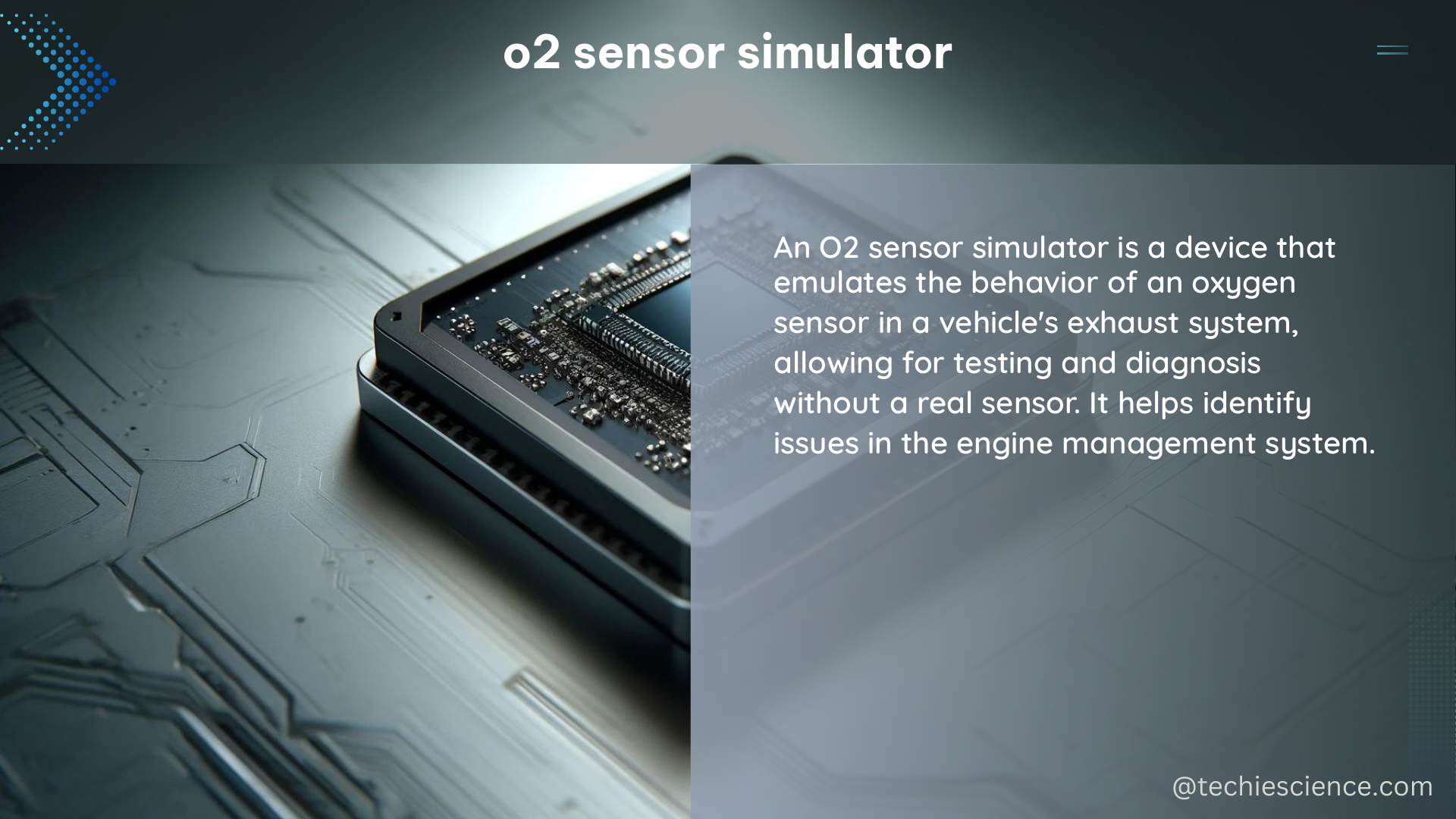The O2 (Oxygen) sensor simulator is a versatile device used to mimic the output of an O2 sensor in a vehicle’s exhaust system. This powerful tool is essential for troubleshooting issues related to the O2 sensor, as well as bypassing the sensor altogether when necessary. In this comprehensive guide, we’ll explore the technical specifications, measurable data, and practical applications of O2 sensor simulators, providing you with a detailed, hands-on playbook for mastering this essential automotive diagnostic tool.
Understanding the O2 Sensor and its Voltage Output
At the heart of the O2 sensor simulator is the understanding of how the O2 sensor itself operates. The O2 sensor is responsible for monitoring the oxygen content in the exhaust gas, providing crucial feedback to the vehicle’s Engine Control Unit (ECU) to optimize the air-fuel ratio for efficient combustion and reduced emissions.
The O2 sensor outputs a low-current voltage signal that varies based on the oxygen concentration in the exhaust gas. This voltage range typically spans from approximately 0.1 volts at 0% oxygen concentration to 0.9 volts at 100% oxygen concentration. The ECU uses this voltage signal to adjust the fuel injection and ignition timing, ensuring the engine operates at its most efficient and environmentally-friendly levels.
Key Features of an O2 Sensor Simulator

To effectively mimic the O2 sensor, an O2 sensor simulator must possess several critical features:
-
Voltage Output Simulation: The simulator must be able to generate a variable voltage output that matches the range of the O2 sensor, from 0.1 volts to 0.9 volts, to accurately represent the oxygen concentration in the exhaust.
-
Oxygen Concentration Simulation: In addition to voltage output, the simulator should be capable of simulating different levels of oxygen concentration, allowing technicians to test the ECU’s response to various exhaust gas compositions.
-
Wiring Harness Compatibility: The simulator must be able to seamlessly integrate with the vehicle’s O2 sensor wiring harness, ensuring a proper electrical connection and communication with the ECU.
-
Programmability: Advanced O2 sensor simulators may offer programmable features, enabling technicians to customize the voltage output, oxygen concentration, and other parameters to suit specific diagnostic needs.
-
Optical Simulation: Some O2 sensor simulators, particularly those used in industrial applications, utilize optical technology to simulate the behavior of digital optical oxygen sensors, allowing for comprehensive testing and verification of sensor connections and performance.
Installing and Configuring an O2 Sensor Simulator
The installation process for an O2 sensor simulator typically involves the following steps:
-
Identify the Correct Wiring Harness: Locate the specific wiring harness that connects the O2 sensor to the vehicle’s ECU, ensuring the simulator can be properly integrated.
-
Tap into the Appropriate Wires: Carefully identify and access the wires within the harness that carry the O2 sensor’s voltage signal, allowing the simulator to be connected.
-
Connect the Simulator: Attach the O2 sensor simulator to the wiring harness, ensuring a secure and reliable electrical connection.
-
Configure the Simulator: Program the simulator to output the desired voltage and oxygen concentration levels, tailoring the simulation to the specific diagnostic needs.
-
Verify Functionality: Test the simulator’s operation by monitoring the ECU’s response, ensuring the simulated signals are properly recognized and processed.
Practical Applications of O2 Sensor Simulators
O2 sensor simulators have a wide range of practical applications in the automotive industry, including:
-
Troubleshooting O2 Sensor Issues: When an O2 sensor is suspected of malfunctioning, the simulator can be used to isolate the problem by simulating the sensor’s output and observing the ECU’s reaction.
-
Bypassing the O2 Sensor: In some cases, technicians may need to bypass the O2 sensor altogether, such as when the sensor is faulty or during engine tuning and modification. The simulator can be used to keep the check engine light (CEL) off and prevent the ECU from storing related diagnostic trouble codes.
-
Verifying ECU Functionality: By simulating various O2 sensor outputs, technicians can assess the ECU’s ability to properly interpret and respond to the sensor signals, ensuring the engine management system is functioning as intended.
-
Sensor Calibration and Testing: O2 sensor simulators can be used to calibrate and test the performance of replacement O2 sensors, ensuring they meet the manufacturer’s specifications and will operate correctly in the vehicle.
-
Industrial Applications: In industrial settings, optical O2 sensor simulators are used to verify connections and simulate the behavior of digital oxygen sensors, enabling comprehensive testing and validation of sensor performance in various measurement conditions.
Conclusion
The O2 sensor simulator is a powerful tool that plays a crucial role in the diagnosis, troubleshooting, and maintenance of vehicle exhaust systems. By understanding the technical specifications, installation process, and practical applications of this device, automotive technicians and enthusiasts can unlock a new level of precision and efficiency in their work, ensuring optimal engine performance and emissions control. Whether you’re tackling complex diagnostic challenges or simply seeking to bypass a faulty O2 sensor, this comprehensive guide has provided you with the knowledge and insights to master the O2 sensor simulator and take your automotive expertise to new heights.
References:
- O2 Sensor Simulator: Spacer or Tune It Out? Questions, Help Pls
- Rear O2 Sensor Trick
- O2 Simulator Installation
- Optical O2 Simulator

The lambdageeks.com Core SME Team is a group of experienced subject matter experts from diverse scientific and technical fields including Physics, Chemistry, Technology,Electronics & Electrical Engineering, Automotive, Mechanical Engineering. Our team collaborates to create high-quality, well-researched articles on a wide range of science and technology topics for the lambdageeks.com website.
All Our Senior SME are having more than 7 Years of experience in the respective fields . They are either Working Industry Professionals or assocaited With different Universities. Refer Our Authors Page to get to know About our Core SMEs.